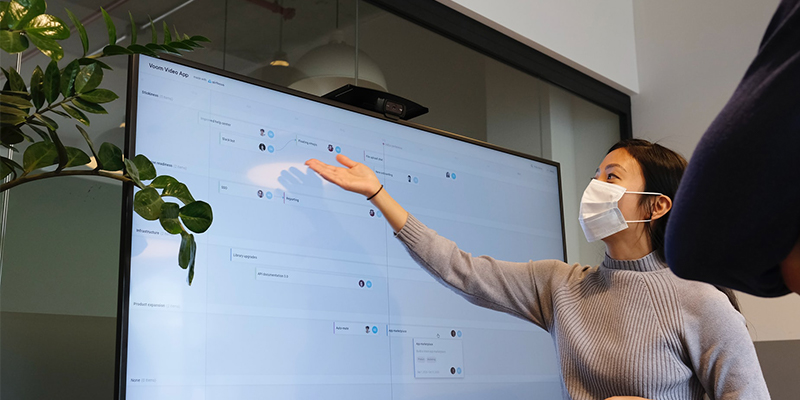Imagine cooking a sensational meal and then serving it on paper plates and using the kids plastic cutlery to save on the washing.
It might still taste great (and you are doing your bit for the environment) but a vital part of any great meal is the full experience.
Far too often, the vital question and answer section at the end of a presentation or investor pitch is forgotten about and the audience doesn’t get the whole experience.
People tend to spend less time preparing for the Q&A either because there is real trepidation about what might be asked and they are sticking their heads in the sand, or they want to focus on the area they perceive they have the most control over – the presentation – and aren’t sure how to prepare for the questions.
Any presentation’s question and answer section should be seen as a brilliant opportunity for two-way communication between you and your audience and a chance for people to get the additional information they need.
It might seem like something out with your control, but this is far from the truth. You can prepare for a large majority of the Q&A and even use the presentation to guide some of the questions to help you manage the situation.
So to help you get ready for the other 50% of your presentation, here are some ideas to make the most of your question and answer session.
Prepare yourself
It is crucial you start with the right mindset. You will find it difficult to succeed if you view a question and answer session as a “them vs us” situation. Don’t start with a defensive mindset; it will impact the tone of your answers and create a negative situation.
Remember our negotiation techniques – find a win-win.
Your Top Five
Try to think about the top five types of questions you’d really rather not receive. Perhaps you are not as strong on the financial side of the business or maybe the HR and training aspect of your business is not where your skills lie.
Whatever you feel least comfortable with, prepare with some key facts around these areas and craft some answers as any good, agile speaker would so that you can adapt to suit the question’s premise.
And finally, as part of your preparation, get ready with an upbeat closing line to the final question. Use that opportunity to remind the audience about your key takeaways from your whole presentation.
Pause, Set and Answer
Using a short pause before you speak will help establish a consistent rhythm to your answers and show you are in control of the situation, not just throwing out answers off the cuff.
It will also help you gather your thoughts and prepare a short, concise answer to the question.
Consistently pausing before you answer will help you mask the more difficult questions where you need that split second or two to gather your thoughts, again putting you back in control.
Listen and Give Direct Answers
There is nothing worse than wasting time answering the wrong question during what is often a short Q&A. Either you have misunderstood the question, or you’ve not been properly listening in your ‘post presentation’ relaxation and you are now not accurately answering.
Make sure you are actively listening to the question, not just hearing the audience member speak. It might be an idea to jot down some notes if you can.
Also, make sure you answer the person who has asked the question. In a face to face scenario, it is easy to make eye contact with the person posing the question, and as you work through the answer, you can broaden it out to the whole audience when you feel it’s appropriate.
However, if you are working virtually, you can make it more obvious by using the questioner’s name in your answer.
Direct, Open and Honest
There will be the odd occasion when you encounter a question to which you don’t know the answer. This is not the end of the world and it’s certainly not fatal for your presentation or pitch.
If this is the case and you don’t know the answer, say so. Tell the questioner that you will find the answer for them and get back to them.
There are very few occasions when it is acceptable to say ‘No comment’, and most involve lawyers. There will be situations when, due to legal reasons or as a result of company policy, you won’t be able to divulge as much as your audience would like, but that’s fine: people will understand.
You will likely know the topic that will trigger that question, so prepare for it and respond appropriately.
Don’t over-answer; keep the answers simple and to the point. Try to be concise and answer what you have been asked; don’t waste time providing lots of background or context where it’s not needed. If your audience does require more information, that can become the next question.
Also, think about your audience and try to answer using appropriate vocabulary. If you are not addressing an audience of peers, then technical jargon will almost be lost on them, reducing the impact of your message. It will confuse and likely result in more questions.
Turning Negative into a Positive
There will, on occasions, be questions you don’t want to answer or that are framed in a way that raises the hackles on the back of your neck.
The first thing to remember is that all questions are valid, but it is how you handle them that matters.
Firstly, empathise with the questioner and show you understand their point of view, even if you disagree.
Then move the conversation onto some common ground; more often than not, this is the bigger picture, the organisation’s strategic direction and the successful end goal that the question relates to.
Now start to rephrase the question if you can. Move the topic to a more neutral space using some bridging techniques to guide the conversation to a position where you can provide a more positive response.
It will help if you’re not evasive, so this will take some practice.
Win-Win
The crux of a good question and answer session is that everyone walks away feeling like they’ve got what they need.
The audience feels like they have been part of a two-way conversation, and you feel like you have imparted as much insight and knowledge through your Q&A as you did in your presentation.
It definitely takes practice, but there is absolutely no need to go into any question and answer session unprepared, and I can help.


